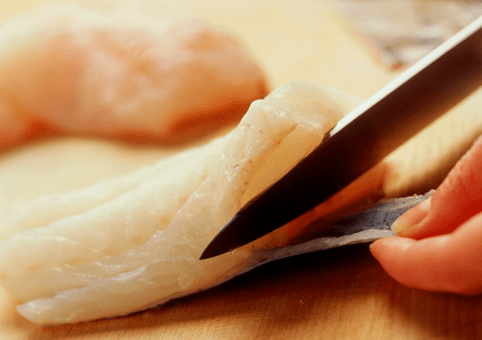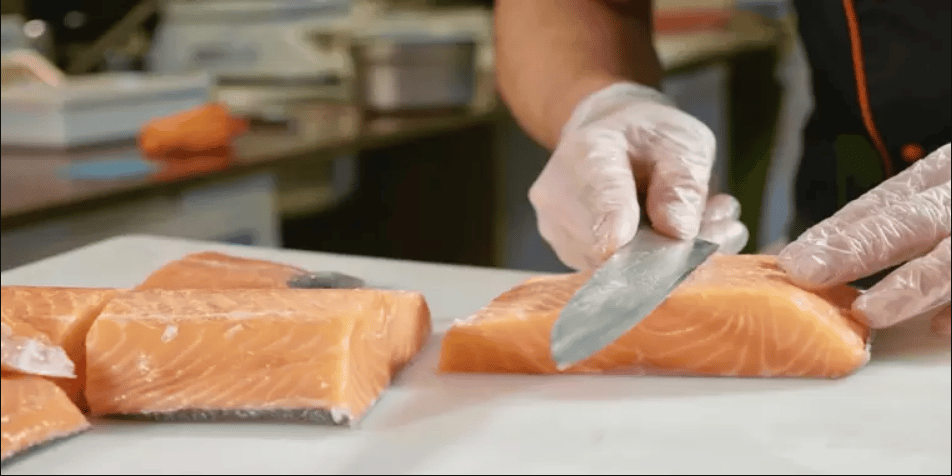The great outdoors is not for the faint of heart. You’ll need courage, determination, survival skills, and tools. Whether you’re camping or hiking, you’ll need to keep your wits and senses razor sharp. The same goes for those who fish.
The skilled fisherman knows that fishing is more than just setting out to sea and casting nets. He knows that, when it comes to fishing, he’ll need a little more than razor sharp wit and fancy techniques. He knows that he’ll also need razor sharp tools — he’ll need fillet knives.
A dull fillet knife takes away from the glory of an amazing catch. And in a worst-case scenario, it makes cleaning fish messy and dangerous. So before getting out your old fillet knife for your next fishing expedition, be sure that it’s as sharp as your abilities. Here are five tips for making that happen.
IMAGE: PIXABAY
Don’t Use Pocket Sharpeners To Sharpen A Dull Knife
A new fillet knife usually comes with a pocket sharpener. This should be used to fine tune the edge of an already sharp knife, not to sharpen a dull knife. The reason is because it just doesn’t get the job done.
When you want to sharpen a dull blade, use a sharpening stone. Basic sharpening stones are cheap and easy to use. They usually come with two different sides: The smooth side and the course side, each having its own purpose.
Use The Cheese Slice Method
The blade of fillet knives are a bit more flexible than regular ones, and if you sharpen them like regular knives, you’ll end up with partial sharpness. To sharpen the entire blade along its length, you have to be methodical.
Firstly, you pour soapy water on the smooth side of your sharpening stone to act as a lubricant. Next, hold the blade at an angle of about 15-20 degrees to the stone— most use 20 degrees. Make long, even stokes from the base of the blade to the tip, like you’re trying cut a slice of cheese.
Do this about 10-15 times on each side while applying a bit of pressure. Be sure to maintain the 20-degree angle at all times and do not stroke backwards. Instead, turn the blade over when you want to stroke the other side. Also make your stroke gets to the tip of your blade.
Remember To Steel
Steeling is using a sharpening rod to realign the edge of your knife’s blade. This rod can be made of round steel, carbon steel, or other materials. When steeling, hold the knife at a 30-40 degree angle to the rod and stroke the rod with the blade in a smooth, singular motion. Do this about 2-3 times on each side of the blade.
Watch The Shoulders
If you’ve been using and sharpening your knife for a while, it could develop “shoulders.” Shoulders are the rounding out of the edge at the tip of your blade, this prevents you from getting a straight edge. There are devices specifically made for removing shoulders, but it can also be done using your sharpening stone.
What you need to do is to turn the stone over to its course side. Place the blade at an angle of about 10-15 degrees and stroke more vigorously than when you are sharpening. What you’re basically trying to do is to get rid of the shoulders by thinning the blade. Do this a couple times on both sides of the blade.
Stroke To Perfection
After removing the shoulders, flip the sharpening stone to the smooth side and repeat the first step. Then, move over to your steeling rod and make a couple strokes on both sides of your blade. Now your fillet knife is as sharp as your skill and you can gut with glory. Keep these tips in mind to ensure your blade remains as sharp as it was the day you purchased your knife.
If you are interested in even more lifestyle-related articles and information from us here at Bit Rebels, then we have a lot to choose from.


COMMENTS